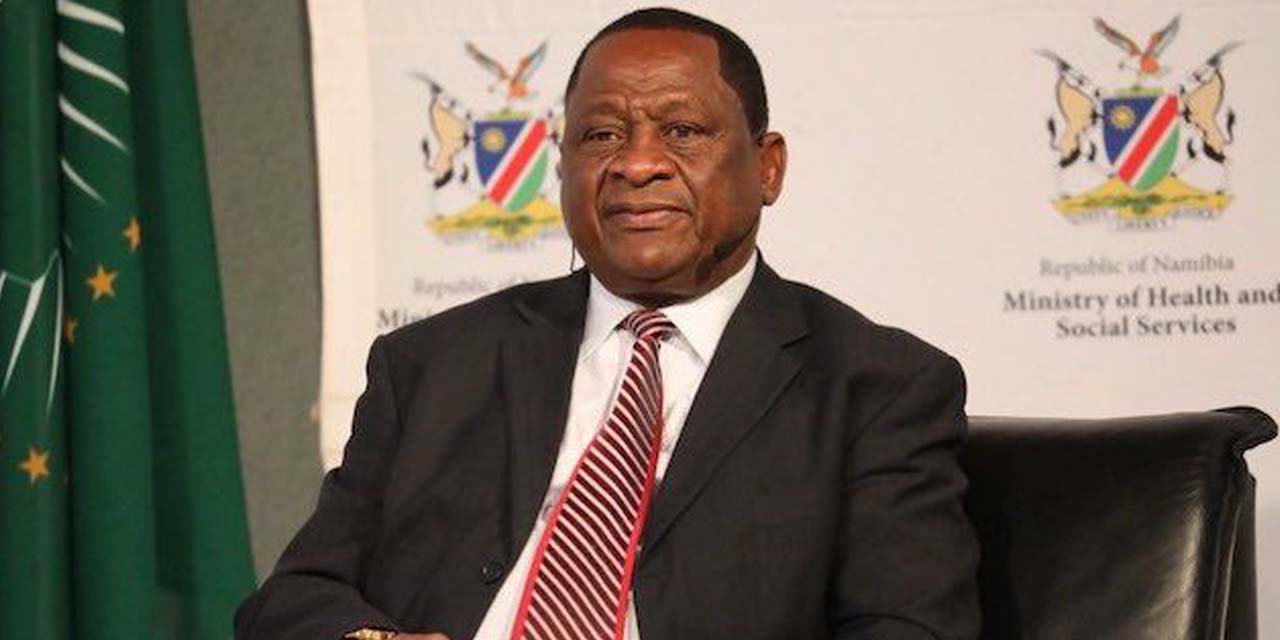Tujoromajo Kasuto
The Government has invested and spent a significant amounts of resources to combat the scourge of HIV/AIDS in the country.
In terms of procuring anti-retroviral medicines alone, Government spends in excess of N$200 million every year. These investments have produced the required results as witnessed in the reduction in the number of deaths in Namibia due to HIV/AIDS complications, says Minister of Health and Social Services, Dr Kalumbi Shangula. He spoke today at the 2021 World Aids Day Commemoration in Outjo, in the Kunene region.
“It is indeed pleasing that Namibia today proudly stands as one of the few countries that has achieved the 90-90-90 global targets to reach HIV/AIDS epidemic control. In this regard, we must remind ourselves not to lose focus but to continue strengthening our efforts and to realise the revised 95-95-95 fast track target, reach epidemic control and bring an end to HIV/AIDS as a public health threat.”
The Ministry of Health and Social Services (MoHSS) closely monitors the HIV prevalence ratio in Namibia that currently stands at 8.3 percent of the general population, according to statistics from the Namibia Population-based HIV Impact Assessment (NAMPHIA) conducted three years ago. In the past two years, the country has experienced unprecedented challenges to the health systems, with the advent of the COVID-19 pandemic. The intersection of HIV/AIDS and Covid-19 pandemics has detrimental effect on the control of the former.
In addition, one of the challenges faced over the years relates to achieving targets among children living with HIV. One of the factors is the limited range of paediatric ART formulations and poor adherence.
In order to address these gaps, the Ministry has started transitioning eligible children on ART to the new Paediatric Dolutegravir-based formulation, which is currently the most effective ARV medicine available in the world.
Furthermore, the Ministry has introduced a programme called the Namibia Adolescent Treatment Support (NATS), which is an adolescent peer-led intervention to support treatment, care, and adherence to medication amongst children living with HIV.
Although there are challenges in achieving some of these targets, to date there is more than 93 percent of eligible adults, and 81 percent of children enrolled to HIV Anti-Retroviral treatment.
These successes were recorded because of the robust strategies and programmes that the Government and its development partners, such as PEPFAR, Global Fund, the UN family, civil society organisations and Non-Governmental Organisations have put in place.
The Combination Prevention Package on HIV remains one of the most important components of the national HIV/AIDS strategy. Equally important, as part of the response there is specific targets on Adolescent Girls and Young Women to minimise incidence and risks related to HIV.
The Ministry and its partners continue to pool resources to strengthen the scale-up of prevention services countrywide. These include the rollout of condoms, HIV testing, Voluntary Medical Male Circumcision and Pre-Exposure Prophylaxis (PREP) to prevent new cases, improve health outcomes, reduce HIV related disparities, and attain a future free of HIV.
World Aids Day Commemoration is a day set aside specially to mobilise the people of the world to focus attention on one of the most devastating pandemics to have faced humanity in the past 100 years. It is also a day to reflect on the gains made, the successes recorded and the impediments encountered in HIV/AIDS response.
Above all, it is a day to remember and honour those who have lost their lives due to AIDS or its related complications. At the same time, to celebrate the brave men, women and children who have prevailed, fought back and survived illnesses related to HIV infection.




